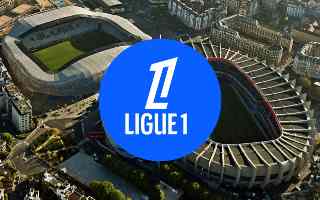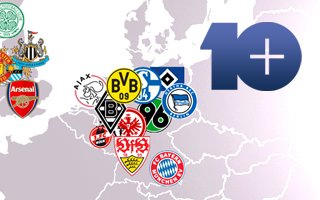Stade Geoffroy-Guichard (Le Chaudron)
| Capacity | 42 000 |
|---|---|
| 2,883 (Business seats) | |
| 126+126 (Disabled seats) | |
| 2,000 (Away section) | |
| Country | France |
| City | Saint-Étienne |
| Clubs | AS Saint-Étienne |
| Inauguration | 13/09/1931 |
| Construction | 1930-1931 |
| Renovations | 1936-1938, 1957, 1968, 1976, 1984, 1997-1998, 2007, 2011-2014 |
| Cost | FRF 600,000 (1931), €71.8 million (2011-2014) |
| Record attendance | 47,747 (Saint-Etienne - Lille OSC, 11/05/1985) |
| Design | Thierry Meyer, Michael Saidoun (1930), Dominique Berger, André Jallon (1998), Atelier Chaix & Morel et Associés, ARCH, IOSIS (2011) |
| Contractor | Léon Grosse Groupe (2011-2014) |
| Address | 14 rue Paul et Pierre Guichard, 42028 Saint-Etienne |
Advertisement
Stade Geoffroy-Guichard – stadium description
As with many stadiums in the early 20th century, this one’s history begins with landfill. This is what its location had been used until Geoffroy Guichard acquired the land in 1930. First grandstand was able to hold 1,000 people and cost FRF 600,000 to build. It was accompanied by two embankments behind the goals and running track.
Already in 1936-38 the stadium went through its first expansion, reaching 15,000. In 1957 the running track was removed, but the Guichard family had to transfer the stadium to the municipality due to lack of funds for further redevelopment. Under municipal ownership the floodlights were installed in 1965, then between 1968 and 1976 all stands were covered.
Another major upgrade came in 1984, when Euro games were held here. The western grandstand was rebuilt from scratch with two large tiers (existing to this day) and both kops were expanded, receiving new cover. Uncommon at that time, the south end was covered with plexiglas to assure proper sunlight to the field.
Further changes occurred for the 1998 World Cup. With all-seater rule being introduced, the stadium’s capacity fell drastically from almost 48,000 and only thanks to a second tier added to the east side the size of almost 40,000 was reached. Other changes also occurred on that occasion, like new lighting system, expanded main stand’s infrastructure, etc.
And finally, in 2016 came the stadium’s second Euro, for which a gradual redevelopment was prepared. Stand after stand, the stadium grew to over 42,000 with northern corners filled and both kops receiving new upper balconies. Roof was completely replaced over three stands and the entire stadium was covered with trapeza panels, giving it a modern, metallic outer skin.
Advertisement
Pictures
-

2014 © Chaix & Morel Associés 
2014 © Chaix & Morel Associés 
2014 © Chaix & Morel Associés 
2014 © Ville de Saint-Etienne 
2014 © Ville de Saint-Etienne 
2015 © Legendes du Sport TV 
2015 © Legendes du Sport TV 
2015 © Legendes du Sport TV 
2015 © Legendes du Sport TV 
2014 © Ville de Saint-Etienne 
20.02.2022 © Léo 
20.02.2022 © Léo 
21.12.2014 © brucki.blogspot.com 
21.12.2014 © brucki.blogspot.com 
21.12.2014 © brucki.blogspot.com 
15.12.2019 © Unterwegs-in-Sachen-Fussball 
15.12.2019 © Unterwegs-in-Sachen-Fussball 
15.12.2019 © Unterwegs-in-Sachen-Fussball 
15.12.2019 © Unterwegs-in-Sachen-Fussball 
15.12.2019 © Unterwegs-in-Sachen-Fussball 
15.12.2019 © Unterwegs-in-Sachen-Fussball 
© 
18.02.2006 © Gerhard Rudolf 
18.02.2006 © Gerhard Rudolf 
18.02.2006 © Gerhard Rudolf 
18.02.2006 © Gerhard Rudolf 
18.02.2006 © Gerhard Rudolf 
18.02.2006 © Gerhard Rudolf 
18.02.2006 © Gerhard Rudolf 
18.02.2006 © Gerhard Rudolf 
04.2004 © fussballtempel.net 
04.2004 © fussballtempel.net 
04.2004 © fussballtempel.net 
04.2004 © fussballtempel.net 
04.2004 © fussballtempel.net
1998–2011:
Related news
2025
2024
-

France: Paris Olympic Games stadium overview
Although the Euros and Copa America have come to an end, the Olympic Games in Paris are still to come. While football fans may not be particularly interested, we are in for a great celebration of sport. Some of the sports will take place in French stadiums, and some are sure to surprise!
-
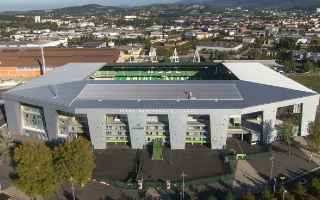
France: Olympic Games’ stadium attack foiled!
The press office of the French Ministry of the Interior reported the foiling of an "Islamist-inspired" attack. The planned attack was to take place during the upcoming Summer Olympics, with the target being the football stadium in Saint-Étienne.
2023
2020
2017
2016
-

Euro 2016: Record – almost 2.5 million people!
Just as predicted, Euro 2016 broke all records in terms of attendance. Not even the threat of terrorism could stop people from around the world from filling the stadiums beyond 90%.
-

Euro 2016: The largest Euro in history
Average capacity of every stadium outgrew all European Championships held in this century. Ticket number highest in history, but how does attendance look so far? Let’s see!
-

Euro 2016 countdown: 06 – Stade Geoffroy Guichard
Looking at it today it’s really hard to believe that underneath its modern outer skin are the same stands that hosted the 1998 World Cup. Meet the legendary Cauldron!
2015
-

Euro 2016: Group draw over, here’s the calendar
All group games now set, check out detailed times and locations here. Some tasty fixtures await in June 2016 and we can only guess who will make it to the July knock-out games.
-
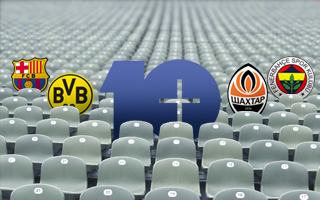
10+ Ranking 2015: Attendances in Europe (Part 2. The Clubs)
Borussia, Barca and Man United – lovely dominant trio. But it wasn’t them who gained most fans last season. Check all 217 clubs that draw an average crowd of 10,000+!
-
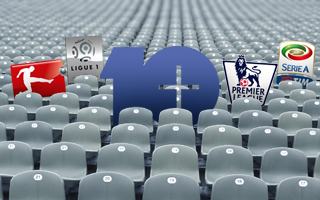
10+ Ranking 2015: Attendances in Europe (Part 1. The Leagues)
Numbers don’t lie: French Ligue 1 outgrew Italian Serie A as Europe’s fourth largest league. Premier League seems unlikely to catch up to Bundesliga, while Turkey, Ukraine and Scotland are down.
2014
2013
-

Saint-Etienne: New south stand opened with smoke signals
After just over a year of reconstruction works the Kop Sud was inaugurated on Saturday. Stade Geoffroy-Guichard is growing and supporters once again prepared a special show for the opening, according to info-stades.fr.
-

France: Ligue 1 season ticket sales sees four records
According to domestic season ticket summary by info-stades.fr, four clubs of Ligue 1 reached an all-time high. However, only seven team across the country managed to sell over 10,000 season cards.
-

France: Milestone reached in Saint-Etienne
Weighing over 200 tons, the massive truss that will support future roof is now hanging over stands. Hanging quite literally, as it’s hooked on two cables above the future 8,000-strong southern kop stand.
2012
-

France: “Geoffroy” will grow further
As the south stand is being slowly dismantled, mayor was able to convince councilors to approve his plan of increasing capacity in this part of Stade Geoffroy-Guichard. A modest increase, but an important one, too.
-

Saint-Etienne: Hot opening of Kop Nord
For over a year it was closed for redevelopment. But when finally opened, the stands seems to have dismissed fears that it may lose its atmosphere. Loud chanting, massive displays and quite some… controversies.
-

New designs: How Euro 2016 venues will NOT look like
Today we take you on an unusual journey across France to see rejected bids for Euro 2016 host venues. They may have lost, but surely are worth a closer look!

 StadiumDB
StadiumDB